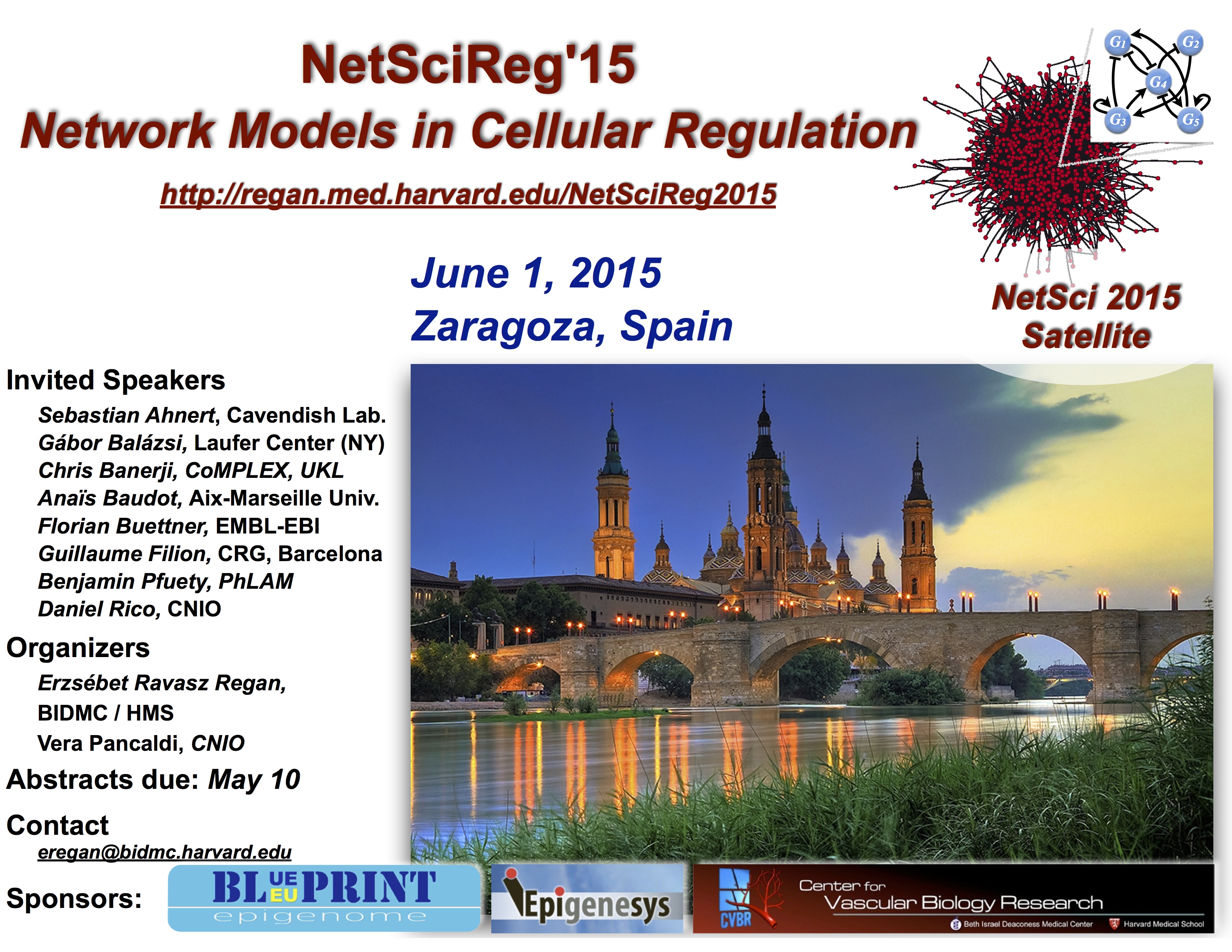NetSciReg'15 - Network Models in Cellular Regulation
June 1, 2015 - Zaragoza, Spain
| Synopsis |
| Program |
| NetSciReg'15 Flyer |
| Important Dates |
| Registration |
| Call for Contributed Talks |
| Logistics |
| NetSci 2015 |
| NetSciReg'14 |
| NetSciReg'13 |
| Sponsors |
|
Time: 6:20 - 6:40 PM
Type: Contributed Talk
Affiliation:
Abstract Remote regulatory regions such as enhancers play a key role in metazoan gene regulation. We have coupled HiC technology with sequence capture to enrich HiC material for interactions involving (at least on one end) ~22,000 known promoters in primary human cells. Combining Promoter-Capture HiC with a peak-calling algorithm (CHiCAGO) developed specifically for this data, we detected hundreds of thousands of putative regulatory interactions across ~20 human primary cell types at a single-restriction fragment resolution. Promoter-Capture HiC enriches the material purely based on sequence on one end of an interacting pair of fragments. Therefore, interactions are detected irrespective of target promoter activity, the identity of recruited transcription factors and across the whole range of distances between interacting fragments. Using this approach, we have assessed the diversity of enhancer-promoter and promoter-promoter interactions across cell types, profiled their dynamics upon lineage commitment and detected the interaction "hallmarks" of active, poised and repressed genes. In addition, we take advantage of promoter interactome data to enhance the annotation of genetic variants mapping to non-coding sequences. |
SPONSORS: |



